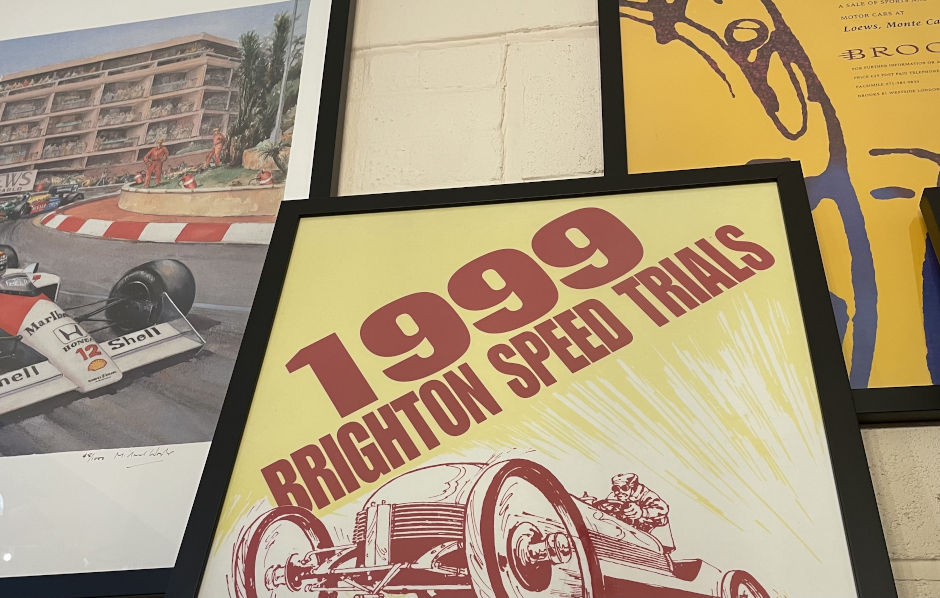
From vintage advertising posters to vintage railway posters, this popular area of collectables offers charming additions to any home that are full of character and (often) colour. There are certain genres of poster that consistently represent good investments; these include ski posters and vintage travel posters, popular for their nostalgia factor. When the South Kensington branch of Christie’s held its final vintage poster sale before closing down in 2016, a 1918 print of an advert for the ski resort at Davos sold for £21500, almost double its original estimate of £8000-£12000. Vintage movie posters are perennially sought after too, especially Oscar winners, popular actors and cult classics (see our blog on the 10 valuable movie posters you just might own).
What is the difference between an original, a reprint and a reproduction vintage poster?
A poster is considered an original if it was printed in the first printing run and an original poster by the original artist is the most valuable. Subsequent print runs will produce reprints – some of these can be valuable in their own right but will never compare to the value of the original. Reproduction posters have no monetary worth for the collector.
Things to look for in a vintage poster
If you fall in love with a vintage poster, consider the following points before purchasing, to ensure you are buying a genuine, quality product.
Early posters (pre-World War II) are usually lithographs, created using a process which produces strong, rich colours. The paints used contained oils so always turn the poster over – if there is an outline of the image at the back, the chances are the poster is an original.
Many post-World War II vintage posters were silk screen printed which creates a thicker layer of paint, susceptible to cracking over time, on the paper. If you can detect cracks, either by looking at or touching the paint texture, this is an indication of originality.
Check the colours of the poster. They should be uniform, with no pixellation or dots which could be a sign of a modern reproduction.
Vintage posters will have a margin of varying width around their edge where the printer’s information is recorded. Check that any margin is intact as the poster will be considered flawed in the absence of an uncut border. Where the margin does contain text, it should be in the same language as the poster and not blurred at all. Anything else could be a reproduction.
Modern fonts are almost always a sign of a fake!
If you are still in any doubt, always seek the advice of an expert, like the knowledgeable dealers who sell at Hemswell.
What types of vintage poster are most collectable?
Vintage posters by sought-after poster artists will command higher prices than those by lesser-known artists. Names to look out for are Cappiello, AM Cassandre, Colin, Toulouse-Lautrec and Cheret to name a few.
The subject of the poster can also impact considerably on value. Winter sports and holiday resorts are very popular, as are vintage posters depicting travel or modes of transport such as cars and ocean liners. Art Deco posters are always very stylish and have a huge following among collectors as they hold their value and will work well in contemporary settings.
What is the difference between poster restoration and poster conservation?
Essentially, restoration aims to return the poster to its original state but does not always consider original materials and techniques. Conservation limits and/or prevents on-going or future deterioration and conservation methods will not affect the original materials used.
Never attempt to restore a vintage poster yourself as you can seriously reduce the value if work is not carried out by an expert in the field. A big mistake that is made, particularly by the novice collector, is to use a sticky tape to repair tears. When this is removed, it may cause severe damage and will leave stains on the poster that will be expensive for an experienced conservator to remove and make good again for you.
As with all areas of collectable artwork, the novice collector should start with something they like. Vintage posters from the 1950s and 1960s are a popular starting point because they are usually bright, bold and fun, needing nothing more than a simple frame to showcase them in their full glory. Non-reflective glass will allow the poster to be seen without glare and never hang your vintage poster in direct sunlight.
All the dealers at Hemswell are experienced in their specialist fields, which is invaluable for both the beginner collector and the seasoned collector looking for authentic and original pieces at competitive prices. A trip to Hemswell will give you the opportunity to browse all our departments, including our advertising collectables and railwayana, while having a great day out.